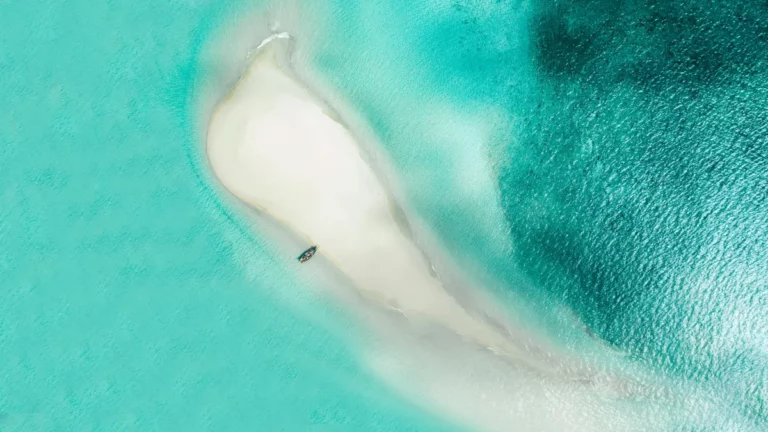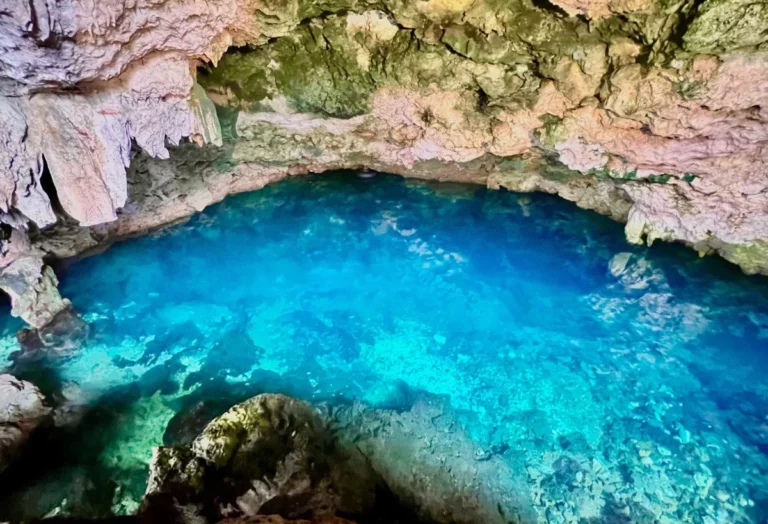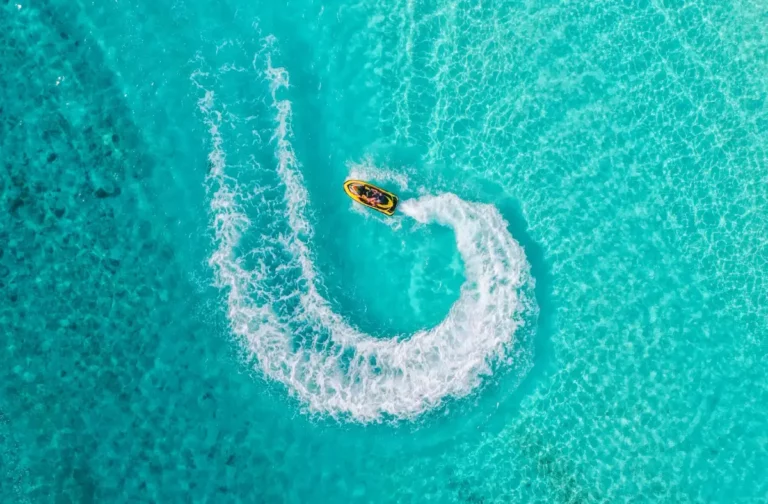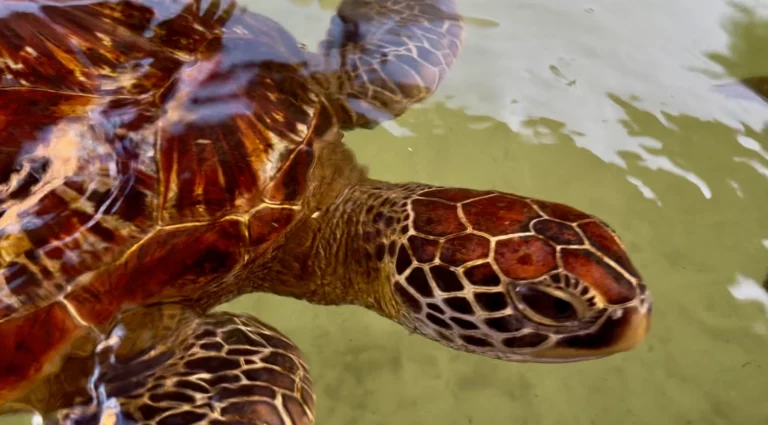Where the Ocean Glows: Welcome to Zanzibar After Dark
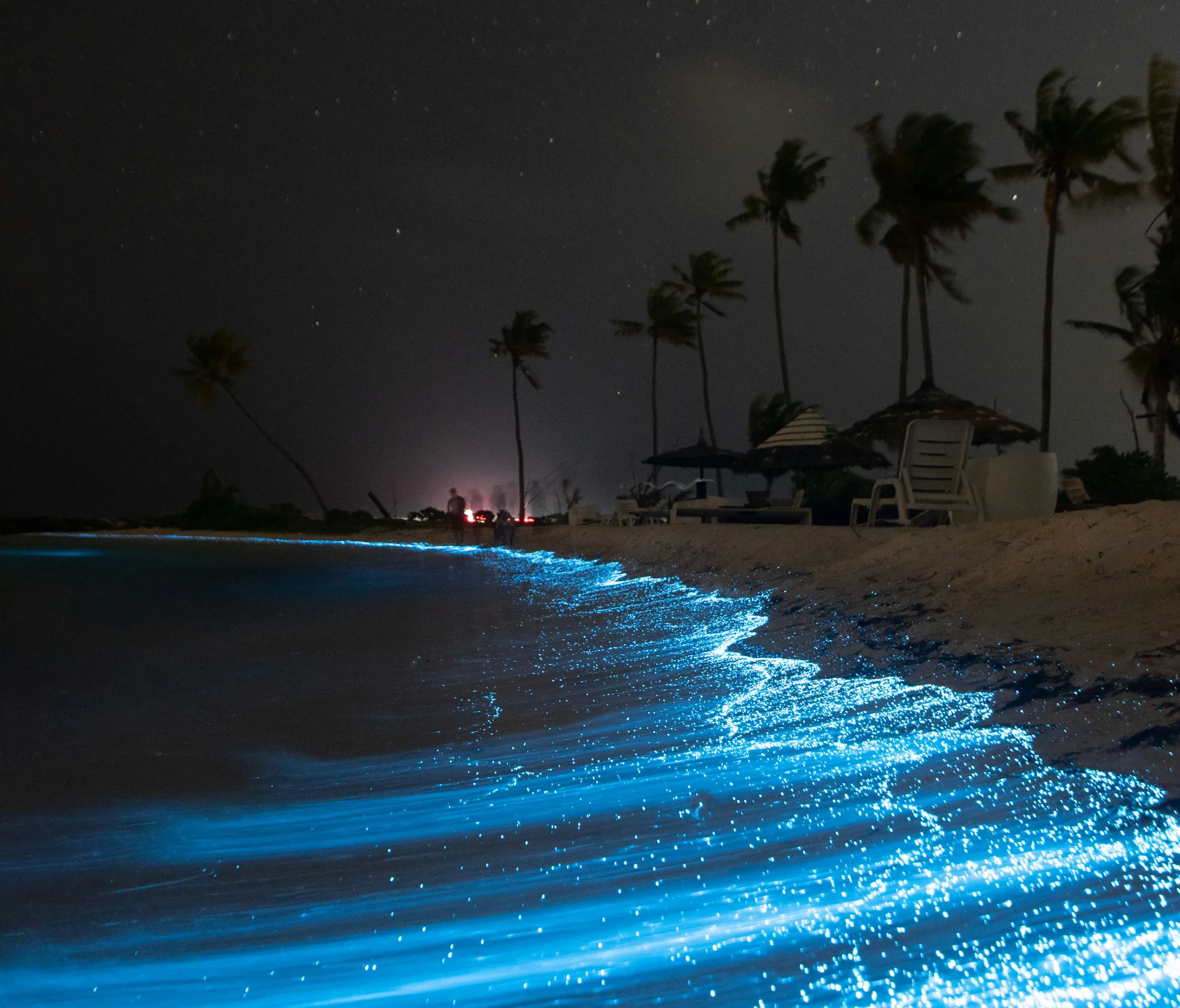
Zanzibar by day is paradise, but by night, the Indian Ocean can turn into something else entirely—a glowing, electric-blue canvas that pulses with light at the slightest touch. This shimmering spectacle isn’t a trick of the eye or a special effect. It’s bioluminescence, and if you time it right, you can witness this rare and natural glow firsthand.
As the sun disappears beyond the horizon, certain pockets along Zanzibar’s coast come alive with light, not from lanterns or beach bars, but from the ocean itself. Millions of bioluminescent plankton swirl invisibly in the water until movement—a swimmer’s kick, a paddle stroke, or even a gentle wave—sets them off, releasing a brief but brilliant flash of blue. For beach lovers, photographers, ocean dreamers, and anyone drawn to the marvels of nature, this is Zanzibar’s best-kept nighttime secret.
What’s Glowing Tonight? Your Guide to Zanzibar’s Bioluminescent Magic
What Is Bioluminescence?
The Science Behind the Glow
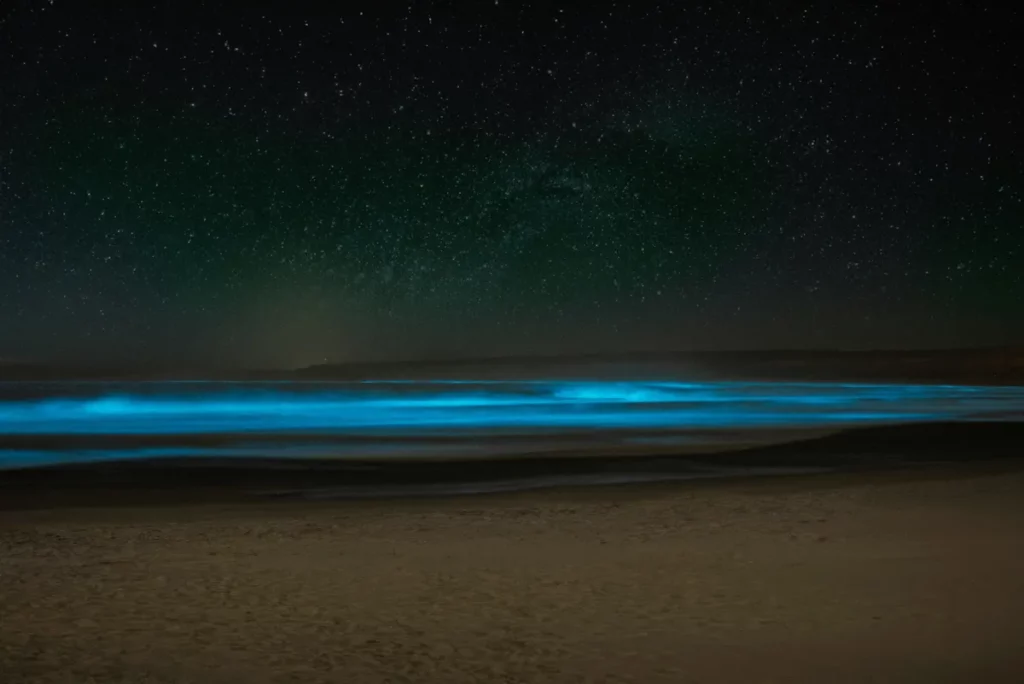
Bioluminescence is the production and emission of light by a living organism. In marine environments, the usual stars of the show are tiny plankton called dinoflagellates. These microscopic creatures emit light when they are disturbed—usually by motion in the water. That’s why the glow often follows the path of your hand as you swim, or the wake of a boat as it glides along the sea at night.
This light show is the result of a biochemical reaction. When a dinoflagellate’s cell membrane is disturbed, it triggers an enzyme (luciferase) to act on a light-emitting molecule (luciferin), producing a quick flash of visible light. Think of it as nature’s own glow stick—just without the chemicals and plastic casing.
Why Does It Happen?
While the glow might feel magical, it actually serves practical functions in nature. For some organisms, it’s a defense mechanism—a way to startle or distract predators. For others, it may help attract mates or lure prey. But in the case of Zanzibar’s coastal waters, the bioluminescence isn’t dangerous, it’s dazzling.
And because it’s a reaction to movement, the more you splash, paddle, or swim, the more intense the light show becomes. Floating still in the water might be peaceful, but gently stirring your hands through the sea is what truly reveals the magic.
Where to See Bioluminescence in Zanzibar
Michamvi Peninsula: Zanzibar’s Glow Central

If there’s a bioluminescence capital on the island, it’s the Michamvi Peninsula. This area—especially around Chwaka Bay—is known for its calm, shallow waters and rich ecosystems, including mangroves that foster the perfect environment for dinoflagellates. The absence of large hotels and urban light pollution makes it even better for spotting the glow on dark nights.
Local tour operators here often run nighttime canoe or kayak trips into the mangroves. The silence, broken only by the gentle dip of a paddle and the occasional laugh of a fellow adventurer, creates an almost meditative experience—until you glance overboard and see your paddle painting light on the water.
Paje and Jambiani: Southern Glow Surprises
These two popular beach towns on the southeast coast are known for their kite surfing and lively guesthouses, but they also offer a less-publicized nighttime phenomenon. On the right night, usually following a few days of calm weather, the lagoons around Paje and Jambiani can light up spectacularly. The shallows between the reef and the beach, especially near low tide, create a gentle basin for plankton to accumulate and work their fluorescent magic.
Because the phenomenon isn’t guaranteed every night, it’s worth checking with local guides or guesthouses—they usually know when the glow is expected.
Nungwi and Kendwa: Northern Glimmers
Up on the northwest tip of the island, the clear waters of Nungwi and Kendwa sometimes offer glimpses of bioluminescence, especially in the months following the rainy season. While the glow may not be as intense as Michamvi or Paje, the experience of swimming at night in warm waters under a star-filled sky, with the occasional spark of plankton lighting your way, is unforgettable.
This area is ideal for travelers already based in northern resorts who want to try their luck with a more spontaneous glow-hunting session.
When to Go: Timing Your Tour for Maximum Glow
Best Time of Year
Zanzibar experiences two rainy seasons: the “long rains” from March to May and the “short rains” in November. Just after these rains—when the sea is rich with nutrients and the plankton bloom—is typically the best time to catch bioluminescence.
Peak seasons are generally:
- Late March through July
- October through December
During these windows, your odds of seeing the ocean glow dramatically improve, especially along the east coast.
Ideal Moon Phases

You might think a full moon would make for the best nighttime adventure, but when it comes to bioluminescence, darker is better. The best time to witness it is during the new moon or the days closest to it. The less ambient light in the sky, the more dramatic the glow in the water appears.
So if you’re planning your Zanzibar trip around this experience, check a lunar calendar and aim for a moonless night.
Tidal Considerations
Tides affect the visibility and concentration of plankton. A rising tide just after sunset can often stir up the right combination of calm surface water and gentle motion. Some tours specifically depart during low tide when certain mangrove areas become accessible by kayak, revealing still, dark water where the glow is at its most intense.
How to Experience the Glow: Tour Types and What to Expect
Kayaking Through Liquid Starlight
One of the most intimate and eco-friendly ways to witness bioluminescence in Zanzibar is by joining a night kayaking tour. These typically launch from Michamvi or around Chwaka Bay, where the shallow, still waters and mangrove-lined channels become a canvas for the glowing plankton.
The experience is pure quiet magic. Your paddle cuts through the dark water, each stroke leaving a trail of shimmering blue. Fish dart beneath your boat in streaks of light, like shooting stars underwater. There’s no engine noise, no artificial lights—just the soft splash of paddles and the glow of the living ocean responding to every movement.
For couples or solo adventurers who appreciate silence and awe, kayaking is the gold standard. It’s the closest thing to floating through a dream.
Swimming in Stardust
If you’re feeling bold—or warm enough—a bioluminescent swim can feel like stepping into a surreal sci-fi fantasy. Move your arms through the water, and your body is instantly outlined in flickering light. Kick your feet, and the ocean seems to erupt with sparkle.
Swimming in the glowing sea is one of the most visceral experiences you can have in Zanzibar. It’s sensory, it’s weirdly peaceful, and it’s a little like being inside a lava lamp—if the lava lamp were alive and very salty.
Do bring reef-safe swimwear, and ideally avoid sunscreen or insect repellent beforehand (they pollute the water and affect the plankton). And don’t worry—it’s completely safe. These glowing organisms are harmless to humans.
SUP and Glass-Bottom Boats: Glide Without Getting Wet
For those who’d rather not take the plunge, stand-up paddleboarding or gliding in a glass-bottom boat is a perfect alternative. Paddleboarding gives you the freedom to skim over glowing patches of sea, with every paddle stroke triggering a soft explosion of light below.
Glass-bottom boats are ideal for families or anyone with mobility concerns. These tours often include spotlights turned off once you’re far from shore, letting the natural light show take over. It’s a fantastic way to spot glowing fish trails beneath you—nature’s own version of an underwater fireworks display.
Some operators even add local storytelling, snacks, or a quiet soundtrack to make the journey feel like a floating lounge under the stars.
Romantic Private Tours for Two
If candlelit dinners feel a bit overdone, imagine this: a boat just for you and your partner, anchored in a quiet mangrove lagoon, surrounded by shimmering ocean light. Many tour operators offer private bioluminescence packages that include a quiet float, sparkling wine, and time to take it all in without a crowd.
The mix of complete darkness, silent water, and sudden bursts of glow makes for an unforgettable atmosphere. Whether you’re honeymooning or just turning a Tuesday into a memory, this is one of the most romantic activities in Zanzibar—hands down.
The Glow and the Gram: Capturing Bioluminescence on Camera
Can You Photograph It?
Short answer: yes—but not easily. Bioluminescence is notoriously camera-shy. Your phone will struggle unless it has advanced night settings and no one bumps your hand. The best way to capture the phenomenon is with a DSLR or mirrorless camera, tripod, and a willingness to experiment.
Key tips:
- Use long exposure settings (10–30 seconds)
- Keep your ISO high (800–3200)
- Use a tripod or something rock solid
- Focus manually (autofocus won’t work in the dark)
- Shoot during the darkest part of the night—preferably with no moon
Some photographers recommend setting your focus before leaving shore and locking it in. Others suggest letting the boat drift to avoid disturbing the glow.
Is It Instagrammable?
If you’re expecting neon sparkles jumping out of your phone camera, manage your expectations. This is one experience that’s better felt than filmed. Still, tour operators sometimes bring GoPros or professional cameras that capture long exposures, and you may be able to buy or receive a few shots after your tour.
That said, sometimes the most powerful memories live better in the mind than the feed. If you can’t get the shot, don’t stress—just float and enjoy the rare privilege of seeing the ocean light up around you.
What to Bring (and What to Leave Behind)
What You’ll Need
- Quick-dry swimwear or clothes you don’t mind getting wet
- Water shoes or sandals (especially if kayaking or wading through mangroves)
- Waterproof flashlight or headlamp (for walking to/from the water, but keep it off during the tour)
- Light sweater or cover-up for after your dip
- Dry bag for your phone or valuables
- Camera with manual settings if you’re planning to shoot the glow
What to Avoid
- Sunscreen and bug spray, especially just before your tour—these chemicals can harm the fragile plankton and disrupt the ecosystem
- Bright lights or torches, unless absolutely necessary—these drown out the glow and ruin the effect
- Loudspeakers or music, unless provided by the operator as part of a curated experience
Remember: less is more. You’re entering a natural light show that runs on complete darkness, peace, and stillness. The fewer gadgets you bring, the better you’ll experience it.
Bioluminescence and Conservation: Glow With Respect
A Fragile Wonder
As enchanting as it is, bioluminescence is also incredibly fragile. These tiny plankton thrive under specific conditions—low pollution, still water, healthy mangroves, and darkness. Unfortunately, increased light pollution, boat traffic, and careless tourism can degrade their environment quickly.
Zanzibar has done relatively well so far in preserving these magic pockets of light, but as interest grows, so does the responsibility.
Choosing Eco-Conscious Tours
Responsible tour operators:
- Avoid using engines in sensitive mangrove areas
- Limit group sizes to prevent overcrowding
- Turn off lights completely during the glow
- Use trained guides with ecological knowledge
Before booking, ask your operator:
- Do they use non-motorized boats in fragile areas?
- Are guides trained in local ecology or conservation?
- Do they avoid chemical repellents and enforce a no-sunscreen policy?
Supporting ethical operators helps protect Zanzibar’s glowing waters for future travelers and the health of its marine ecosystems.
Stories From the Sea: What Travelers Say
First-Time Awe and Repeat Wonder
Bioluminescence tends to leave people slightly speechless. One minute, you’re paddling through darkness; the next, your boat’s wake glows electric blue and fish dart past like underwater comets. First-time travelers often describe it as “the most magical thing I’ve ever seen”—and for good reason. It’s not just a sight, but a full-body, immersive experience.
A solo traveler from Berlin shared that swimming in the glow made her “feel like a galaxy had burst around her arms.” A couple from Cape Town booked a private kayak tour and said it “felt like floating through stardust with nothing but silence and sparkle.” Whether you’re a seasoned globetrotter or someone who’s never set foot in the Indian Ocean before, this is one experience that tends to stick.
Guides Who Know Their Glow
Many local guides add depth to the experience by sharing not just navigation but stories, science, and subtle magic. One Michamvi-based guide explained how he first saw the phenomenon as a child, thinking the water was haunted—until he learned the science in school. Now he delights in watching visitors light up as much as the ocean does.
If you’re lucky, your guide might let you linger longer than expected or show you secret nooks where the glow gathers thickest. And if you’re very lucky, you’ll find yourself completely alone, drifting under the stars, surrounded by nothing but the soft crackle of the ocean and the quiet glow beneath your fingertips.
Other Magical Night Experiences in Zanzibar
Sunset Dhow Cruises
Before the glow, there’s the golden hour. A classic sunset dhow cruise is the perfect prelude to a nighttime bioluminescent tour. Glide across the water in a traditional wooden sailboat, the sun melting into the sea as you sip on fresh juice or spiced cocktails. Some cruises even sail from Nungwi down toward Kendwa and back, creating the perfect transition from sunset to starlight.
Stargazing on the Beach
Zanzibar’s relatively low light pollution (especially outside Stone Town) makes for fantastic stargazing. Combine a bioluminescence swim with lying on the sand to spot constellations, shooting stars, and satellites zipping overhead. Pro tip: bring a blanket and a late-night snack.
Night Markets and Bonfires
In some parts of the island—Paje in particular—small beach bonfires or night food stalls appear along the coast. Grab a grilled octopus skewer or chapati with spicy beans after your paddle. It’s the kind of local flavor that makes Zanzibar’s nights just as tasty as its days.
Booking Your Tour: Tips, Costs, and Trusted Operators
Recommended Local Operators
There are a handful of reliable, eco-conscious tour operators across Zanzibar who run bioluminescence experiences. While we don’t officially endorse any particular one, some names that travelers frequently mention include:
- Zanzibar Kayak Tours (Michamvi) – known for quiet, small-group night paddles
- Blue Lagoon Eco Adventures (Paje) – offers SUP and guided swim experiences
- SeaSpark Zanzibar – focuses on romantic private tours and astrophotography packages
Before booking, make sure to read reviews (especially recent ones), confirm the lunar and tidal conditions for your tour date, and double-check what’s included.
Typical Costs and Inclusions
Prices vary depending on the style of tour, group size, and whether transport is included. Here’s a general guide:
- Group kayak or SUP tours: $25–$40 per person
- Private romantic tour for two: $80–$120 total
- Swim-only or walking-access tours: $15–$25
Tours typically last 1.5 to 2.5 hours and include a guide, basic gear (kayak, SUP, or boat), and sometimes refreshments. Ask if photography is included or available as an add-on.
Booking Tips
- Book in advance during high season, especially near new moons
- Always confirm whether the operator offers refunds if bioluminescence is not visible
- Ask if the tour is weather-dependent—some cancel with too much wind or moonlight
- Bring cash in small denominations if paying on-site
FAQs: Your Glowing Questions Answered
Is it visible every night?
Not always. Bioluminescence depends on multiple factors—plankton density, tide, darkness, and weather. The best visibility usually occurs in the days before, during, or just after the new moon, in calm waters.
Is it safe to swim in?
Yes. The plankton responsible for the glow are harmless to humans. Still, always follow your guide’s advice and avoid swimming if you have open cuts or sensitive skin, just in case.
Can kids join the tours?
Absolutely. Many families with children enjoy these tours, especially those using boats or SUPs. Just be sure to choose a calmer night and a shorter, beginner-friendly option.
What if I can’t swim?
No problem. Many tours don’t require swimming, especially kayaking or glass-bottom boat versions. You can still experience the glow without jumping in.
Certainly. Here’s an expanded version of the conclusion, integrating Mida Creek/Watamu and Lake Victoria, while reinforcing Zanzibar’s status as East Africa’s top bioluminescence destination:
A Glow Apart: Why Zanzibar Shines Brighter in East Africa
While bioluminescence exists in scattered pockets across East Africa, Zanzibar remains in a category of its own—both for the brilliance of the experience and the consistency with which it can be observed.
Take Mida Creek, for example, near Watamu in Kenya. This mangrove-rich estuary offers a serene and biologically diverse setting, and there have been anecdotal accounts of glowing plankton after the rains. However, sightings are infrequent and unpredictable, and dedicated bioluminescence tours remain virtually non-existent. That said, the potential is there: Mida Creek’s shallow waters, protected channels, and limited light pollution closely mirror the conditions that make Michamvi such a hotspot in Zanzibar. If local operators began to actively track the phenomenon and offer eco-tours, Watamu could become a serious contender.
Inland, the story is different. Lake Victoria, East Africa’s freshwater giant, does not host the same types of bioluminescent plankton found in the ocean. While freshwater bioluminescence is possible in other parts of the world—think glowing lakes in Australia or Vietnam—it typically requires specific environmental triggers, such as rare species of fungi, algae, or bacteria. So far, Lake Victoria has not shown this phenomenon at any reliable or observable scale, and it remains unsuitable for bioluminescent tourism.
That’s what makes Zanzibar such a standout. Here, you have all the right factors lining up beautifully: nutrient-rich coastal waters, thriving mangrove ecosystems, warm shallow lagoons, minimal light pollution, and an emerging eco-tourism infrastructure that knows how to deliver the experience without damaging the delicate marine balance. Whether you’re paddling in near silence through Chwaka Bay or diving into the glittering waters off Michamvi, Zanzibar offers an unmatched opportunity to see and feel bioluminescence in all its natural wonder.
It’s not just a location. It’s an atmosphere. A rare, shimmering corner of the Indian Ocean where science meets magic, and the night becomes unforgettable.

